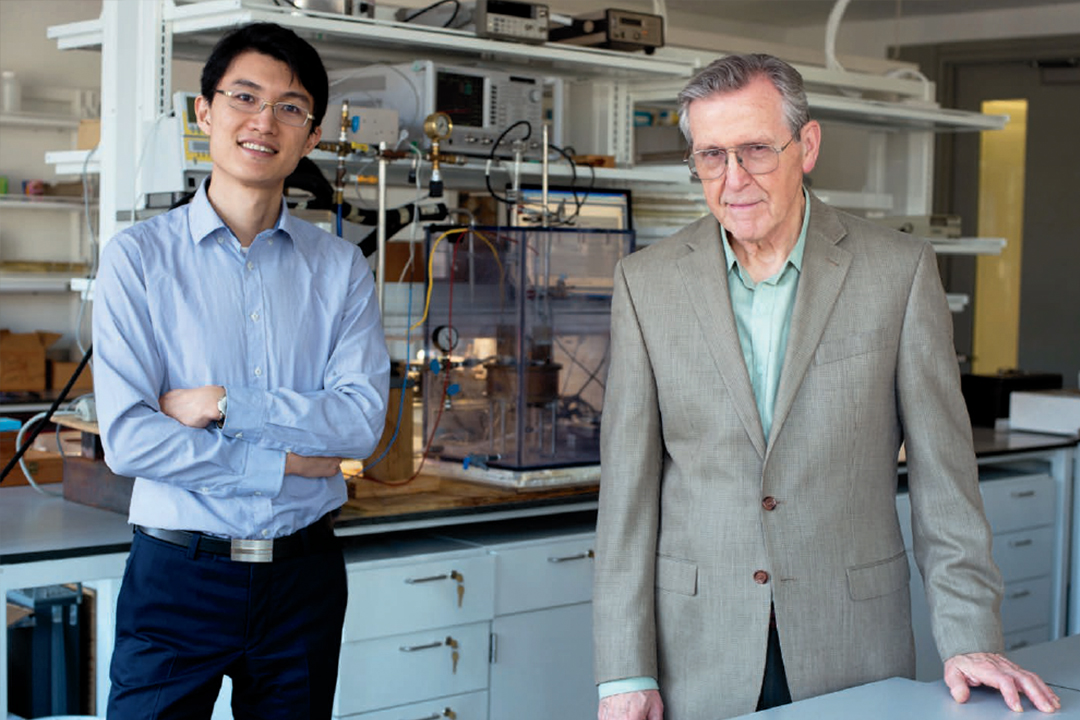Dr. Roger Lang (pictured right)
Dr. Roger Lang’s relationship with NASA goes back many years. He specializes in electromagnetics and remote sensing, and over the years, he has worked with NASA on remote sensing projects that use satellites to look at the earth and determine different properties of the soil, vegetation, oceans, ice, and the atmosphere. He has covered it all.
One particular project, however, stands out for him. For 10 years now he has worked with NASA and its microwave satellite instrument Aquarius to measure the surface salinity of the ocean. Oceanographers, too, have been taking measurements for years, but they take only point measurements, whereas this satellite provides complete measurements of the entire ocean every seven days, according to Dr. Lang.
“Various effects of climate change can be determined by knowing the salinity of the ocean, such as the decrease in salinity due to melting ice,” explains Dr. Lang. “The bottom line of this is for NASA to understand the effects of climate change, and they want me to make this measurement for them.”
Dr. Lang explains that natural radiation comes up from the surface of the ocean and that this emission depends on the salinity of the ocean at its surface and the ocean’s surface temperature. If the satellite can remotely determine the temperature of the ocean’s surface, which it can do by using infrared technology, then from the radiation it receives from the surface, it can provide a very accurate meas-urement of the salinity. This is a two-stage process in which the salinity and the temperature change the refractive index of the water and it, in turn, changes the amount of radiation that the ocean emits.
“I’m going to generate a relationship between the refractive index and the salinity and temperature of the sea water. NASA will use that relationship in its algorithm to sense the salinity from space,” Dr. Lang says.
To do this, he has devised a method using a microwave cavity that is resonant at the frequency of the satellite measurements. By sweeping the cavity over frequency, he can measure the resonant frequency of the cavity and the width of the resonant curve. Then he puts seawater into the cavity through a glass tube. This causes a change in the resonant frequency, and a change in the width of the curve. From those changes he can determine the refractive index of the water.
This is no small task experimentally. Dr. Lang’s team had to figure out how to add seawater through a tube that is 0.1 millimeter in diameter. Since seawater won’t go into such a small tube, they had to use nitrogen to push the water into the tube. Then they had to find a way to keep dirt from getting into the tube and clogging it up. And the list goes on.
But Dr. Lang is not deterred. “We’ve had to learn how to understand these problems and be able to overcome them,” he muses. But the struggle has been worthwhile. “The work we’re doing could make these measurements more accurate not just for our applications, but also for other purposes as well,” he concludes.


